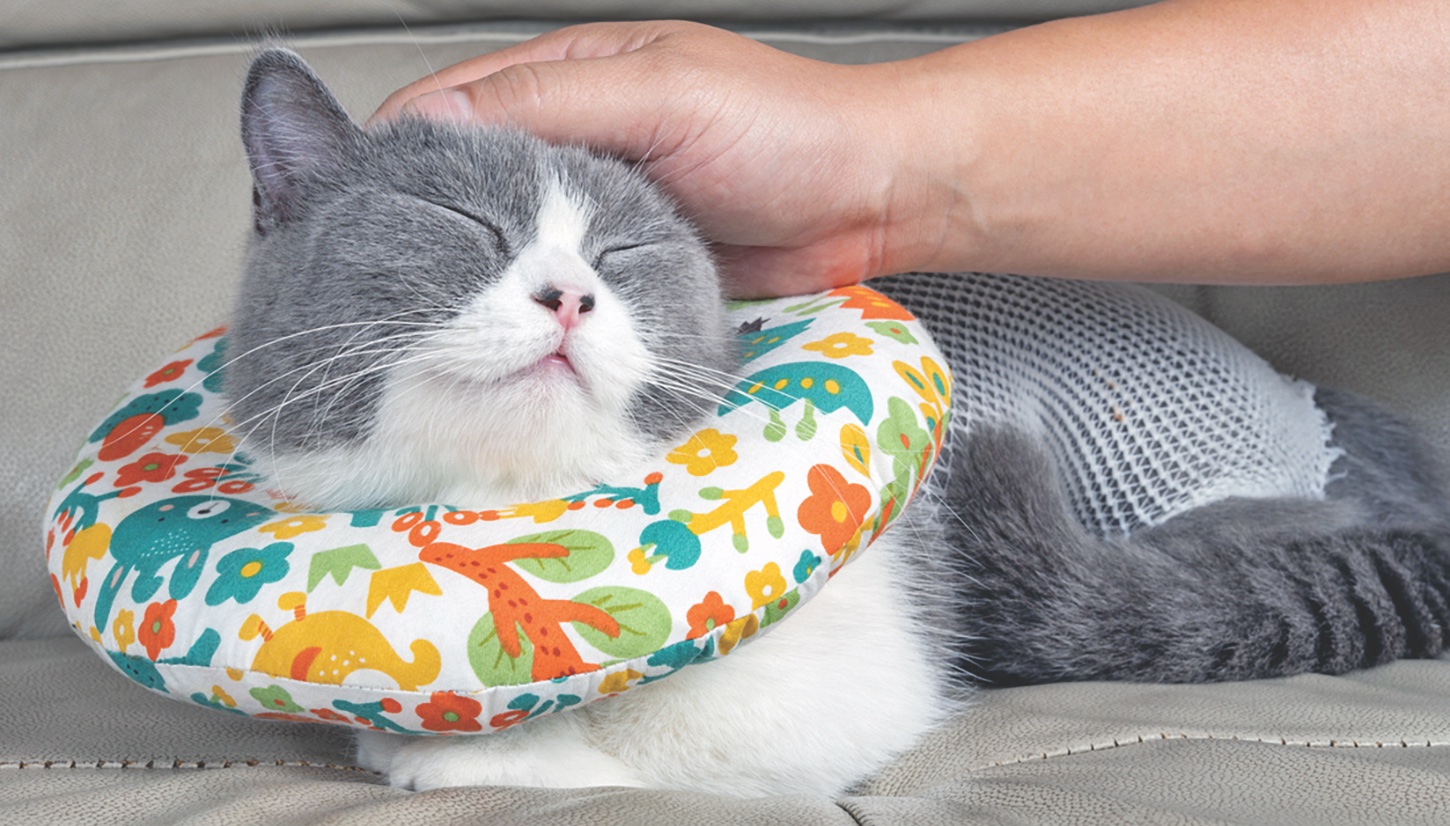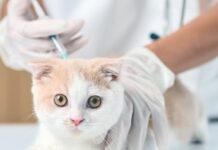Once your cat recovers from anesthesia, she will likely be sent home with you. This can be overwhelming, but it doesn’t have to be.
Before you leave the veterinary clinic, be sure you understand all your cat’s postoperative care needs. Ask questions and request a written copy of the instructions, as it’s easy to forget directives as you head for home. If you get home and are confused about any of the care, call the clinic. They want to ensure a safe, full recovery as much as you do.
General Postop Care
Be sure your cat is eating and drinking. If necessary, set her up in a private room so you can monitor her accurately. If you have other pets, put your postoperative patient in a familiar location in the house and move the other pets.
Be observant and careful when you reintroduce your cat to your other pets. She may not behave as she normally would, and she may have residual odors from the veterinary hospital that the other pets will notice. Do not leave her alone with the other animals until you are 100% confident all is well.
Be aware that your cat may not behave normally for the first day or so as any residual anesthetic and pain medications given at the veterinary hospital wear off.
Keep Her Quiet
Restricting activity is important. You may need to set up a large dog crate for your cat. She should not be leaping on and off things like furniture, stairs, or your cat tree. A crate can allow for safe reintroductions to the household. Put a comfortable, soft bed in for her to curl up on, food and water bowls, and a litterbox in the crate with her.
Keeping your cat quiet will reduce the chances of any problems with external and internal sutures that may have been placed. Watch your cat carefully to make sure she does not lick or chew at her sutures. While some cats are wonderful about leaving incisions alone, others will try to lick or bite their sutures.
You can protect an incision from your cat’s licking with an Elizabethan collar, neck cone, or doughnut collar. It’s likely one will be sent home with you from the veterinary hospital if external sutures have been placed. The collar blocks your cat’s access to her sutures. These can be a soft material or stiff plastic.
Many cats prefer post-surgery body suits that fit nicely but block access to incisions, and baby onesies are often a perfect fit. Make sure you consult with your veterinarian before putting one of these on your cat.
Food and Litter
Unless your cat is on food restrictions due to her surgery, stick to her normal favorite brands and flavors. If she is reluctant to eat, consider adding the juice from a can of tuna or warming her food up a touch to increase the aroma. Make sure that food and water bowls are easy for her to access.
The veterinary staff may suggest that you use a low-dust, pelleted type litter until any sutures are removed. Be sure she can easily get into and out of the litterbox. No matter what type of surgery your cat had, it is important to verify that she is urinating and defecating. This is even more critical if she had surgery related to her urinary tract or gastrointestinal tract.
Medications
Depending on her surgery, medications may be sent home for you to administer, from antibiotics to sedatives to pain medications. Be sure to read the instructions carefully. Some medications work best if given with a meal, while others should be given a few hours after eating. Some can be given together, while others need to be separated by a couple of hours. If you’re not sure, ask your veterinary team.
If you have any concerns about your ability to medicate your cat, let the veterinary staff know. A staff member will show you how to give your cat medication and possibly suggest using transdermal options if possible. For some cats, an easy way to pill them is with a plastic pill gun, which can save you from getting nipped.
Another clever way is to use a tube of lickable treats such as Churu tuna. Clip one corner enough to slip your cat’s pill or capsule in the opening. Then squeeze gently so that the tasty paste comes out along with the medication. Many cats will simply lick the medication down without you having to open their mouths.
Rehabilitation
Just like humans, cats who have had orthopedic procedures are often sent home with a set of exercises to do to start rehabilitation. Be sure to follow these directions exactly and avoid the temptation to start them early. A doctor or technician who is skilled in rehab can demonstrate the exercises to you and can usually provide videos showing you what to do.
Remember that you are part of a team that is caring for your cat. If you have questions or concerns, don’t hesitate to contact the veterinary hospital.




